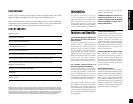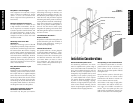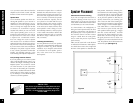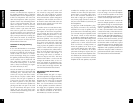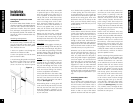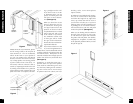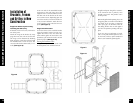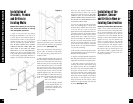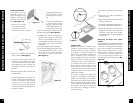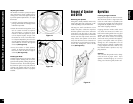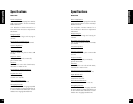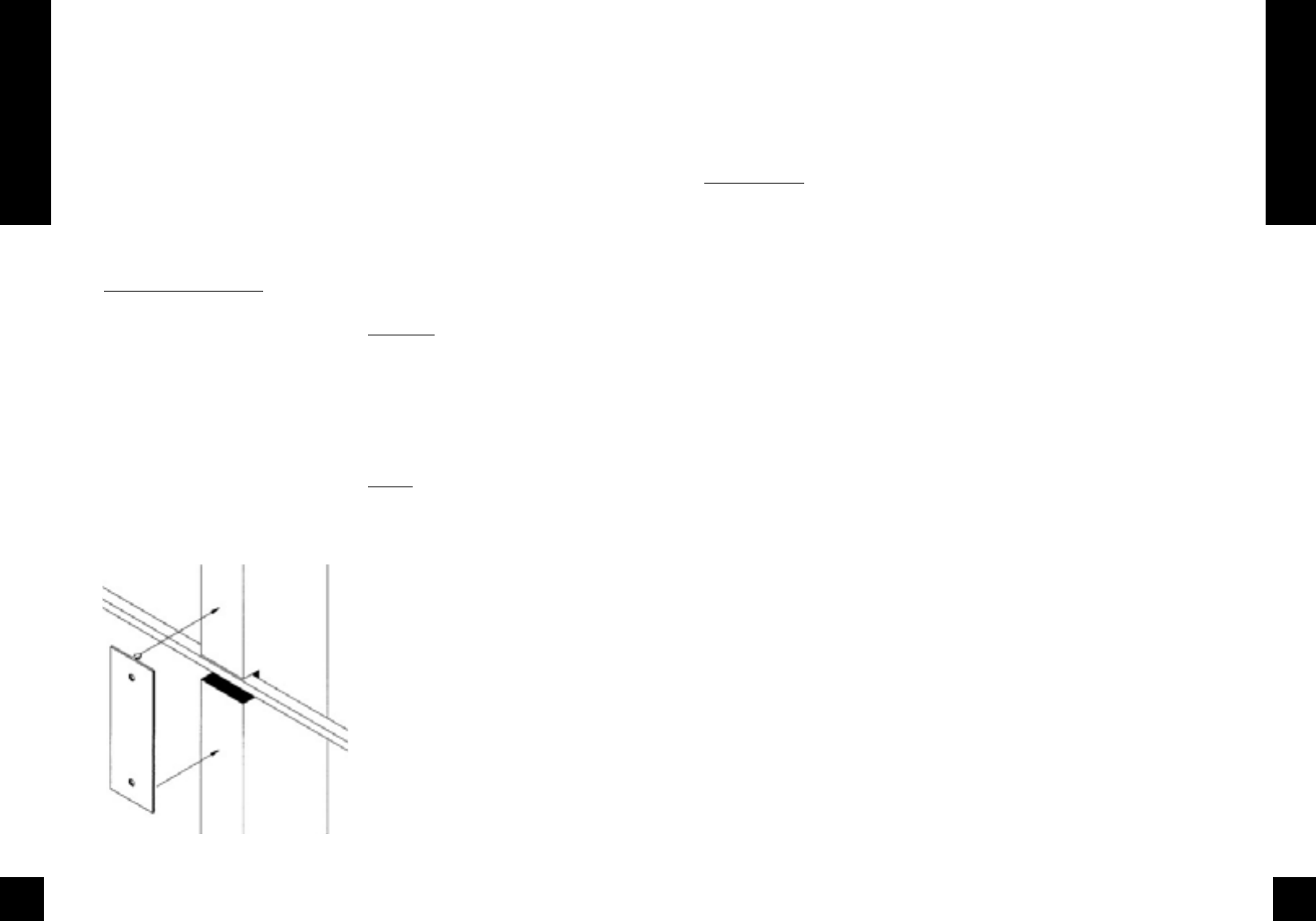
Installation
Fundamentals
Running the Speaker Wire in New
Construction
If you have doubts about whether you are
capable of installing a Niles PR loudspeak-
er in your walls, consult a Niles dealer or
professional installer. They have special
tools, techniques, and experience to make
the impossible possible. The installer can
provide you with an estimate before any
work is done.
Scheduling and Preparation
Plan to schedule the speaker wiring after
the electrical wiring is finished. That way
you can avoid wire routes which could
potentially induce hum over the speaker
wire. The basic rules are:
• Never run speaker wire through the
same hole as an electrical cable.
• Never run speaker wire into the same
J-box as electrical cable.
• Avoid running the speaker wire beside
the electrical cable. Keep your speaker
cable at a distance of at least 18”-22”
(46-56 cm) from any electrical power
cable. Side-by-side wiring is unavoidable
in particular spots in every house, just
move the speaker wire route away as
soon as possible. If construction forces a
side by side run for more than ten feet,
install metal conduit or shielded speaker
wire. Low-voltage wires such as door-
bells, intercoms, telephone, security, or
television cannot cause interference or
hum on your speaker wires, so you can
safely run all of them at the same time,
through the same holes, side-by-side.
Before you drill any holes, mount the
speaker brackets in the desired speak-
er locations and mount p-rings or open
backed J-boxes where the in-wall volume
controls and stereo equipment will be.
Safety First!
Wear gloves, safety goggles and head pro-
tection when drilling. Avoid nails, they ruin
bits and they can create injury. Pay particu-
lar care when using “hole-hogs” and other
powerful electric drills; the torque of the
drill when suddenly stopped by a nail can
break the wrist of a strong man.
Drilling
Use a bit that is large enough for the wires
you plan to run. An auger bit is the pre-
ferred bit for rough-in wiring. It will actu-
ally pull itself through the wood, so that
the drill motor, not you, does most of the
work. You may be drilling a lot of holes,
so this is an important consideration.
Always drill the holes in the center of the
stud. If you have to notch the stud or drill
the hole closer than one inch from the
edge of the stud, protect the wire with a
nail plate (See Figure 3).
When drilling holes in ceiling joists drill
in the center of the joists and try to locate
the hole near the end of the joist. DO
NOT drill through a “gluelam” or any
load bearing beam without the direction
of your contractor.
9
Installation Fundamentals
Try to line the holes up perfectly, because
it makes pulling the wire much easier.
A good technique is to snap a chalk line
across the face of the studs or against the
bottom of the ceiling joists. Then work
backward so that you can always see the
holes you have already drilled. Paying
careful attention to this will save you a lot
of time later on!
Pulling the Cable
Pull the cable in sections (from the stereo
to the volume control, from the volume
control to the speaker). Start with the lon-
gest sections and use left over wire to
complete the short sections. If you plan
to pull many rooms at the same time
through a central route, walk off the dis-
tance to each destination, add a generous
fudge factor for turns and other obstacles,
then cut off each section so that you have
a bundle of wires you can pull at once.
Whenever you run the wire further than
four and one half feet from a hole in a
stud or joist (open attic space, going up
walls, etc.), fasten the wire to the joists or
studs using cable clamps or appropriately
sized wire staples. The wire should not
have large sags in it, nor should it be too
tight. Try to protect the wire from being
stepped on in attics or other unfinished
crawl spaces. There are guard strips, race-
ways and conduits which can be used to
protect the cable. Consult the local build-
ing code for special requirements in your
area.
Concealing Speaker Wire
in Existing Walls
This is actually a fairly simple task if you
restrict your choice of speaker locations
and wire routes to the interior walls or
ceilings of your home. Interior walls in
almost all North American residences are
hollow, so that it is easy to flush mount
speakers into them and route new speak-
er cable around the house. What you
see when you look at the painted wall
board, plaster, or paneling is only the
skin of the wall. Behind the skin is the
skeleton; two-by-four wood or metal
“studs” running vertically from the floor
to the ceiling in walls and two-by-six or
larger “joists” running horizontally in the
ceilings and floors. In between the studs
and the joists is the space for the wiring
and plumbing of your home.
Exterior walls are different. They must
insulate the house from the heat and cold
outside, so they are stuffed with insulation.
The national building code requires that
the hollow wall space in exterior walls
be broken by a horizontal stud placed
between the vertical studs. This “fire
blocking” makes it very difficult to retrofit
long lengths of wire. In some areas of the
country the exterior walls are constructed
of solid masonry, and have no hollow
space for speakers or wires.
Start by examining all the possible routes
you might take to run the speaker wire
from the speaker to the volume control
and back to the stereo. Use a stud sen-
sor or other device to locate the internal
structure of the wall. You want to avoid
all studs or joists. A typical route would
be: from the speaker location up the
inside of the wall to a new hole drilled
into the top “plate” (horizontal two-by-
four at the top of the inside of the wall),
into the attic crawl space, then down
to the volume control location through
another top plate, back up to the attic,
across the attic, and finally down anoth-
er plate to the wall behind the stereo
system itself (See Figure 4). The other
very common route is through the bot-
tom plate of the wall into an unfinished
basement or crawl space.
10
Installation Fundamentals
Figure 3




